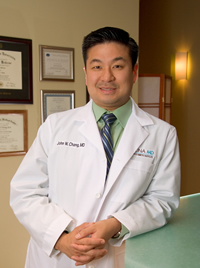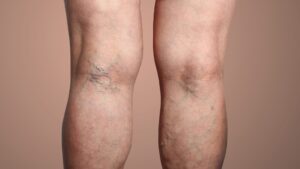| Leg ulcers can be painful, slow to heal, and impact quality of life. At Miami Vein Institute, specialists identify underlying vein problems that contribute to chronic wounds, providing advanced, minimally invasive treatments to support healing. This blog explores why some leg wounds take longer to heal, common causes, warning signs, and strategies for prevention and treatment. With early evaluation and targeted care, patients often experience faster healing, reduced discomfort, and improved mobility. If you’re struggling with persistent leg ulcers, consult Miami Vein Institute to get a personalized plan for healthier legs and a better quality of life. |
Leg wounds, often called leg ulcers, are open sores that can persist for weeks or even months. While minor cuts usually heal quickly, some wounds linger due to underlying circulation issues, chronic conditions, or repeated pressure and trauma. Slow-healing wounds are more than just an inconvenience—they can limit mobility, cause pain, and increase the risk of infection. Understanding why certain wounds take longer to heal helps patients take proactive steps to prevent complications and support recovery. Delaying treatment may worsen symptoms and extend the healing timeline, making early evaluation essential.
Common Causes of Slow-Healing Leg Ulcers
Leg ulcers can result from multiple factors, often related to vein or arterial problems:
- Chronic venous insufficiency: When veins cannot effectively return blood to the heart, fluid pools in the legs, stretching the skin and slowing healing.
- Arterial disease: Poor blood flow reduces oxygen delivery, which is essential for tissue repair.
- Diabetes: High blood sugar can damage nerves and blood vessels, impairing wound healing and increasing infection risk.
- Infection: Even minor bacterial infections can significantly delay recovery and may require antibiotics or specialized dressings.
- Pressure or trauma: Constant friction, pressure, or minor injuries, especially in people with limited mobility, can turn small wounds into chronic ulcers.
Identifying the root cause is essential for effective treatment. Our specialists evaluate circulation, vein health, and other underlying factors to develop a treatment plan that addresses both the ulcer and its source.
The Role of Vein Health in Leg Ulcers
Vein health plays a critical role in wound healing:
- Poor circulation: Damaged or inefficient veins prevent oxygen and nutrient-rich blood from reaching the wound site, slowing recovery.
- Increased pressure: Fluid pooling in the lower legs stretches and weakens skin, making it more prone to open sores.
- Inflammation: Chronic vein disease can cause ongoing inflammation, which disrupts the body’s natural repair mechanisms.
Addressing vein problems early can dramatically improve healing rates. We focus on treating both the wound itself and the underlying vascular issue, ensuring the best possible outcomes for patients.
Warning Signs That a Leg Wound Needs Professional Care
Prompt evaluation is crucial when wounds don’t heal as expected. Seek medical attention if you notice:
- Wounds larger than a quarter-inch or that haven’t improved in two weeks
- Redness, swelling, or warmth around the wound
- Persistent pain, tenderness, or throbbing in the area
- Discharge or an unpleasant odor, which may indicate infection
- Skin color changes, thickening, or darkening around the ulcer
Early intervention by vein specialists can prevent complications, reduce pain, and support faster healing.
Treatment Options for Leg Ulcers
Treatment depends on the underlying cause and severity:
- Compression therapy: Helps improve circulation in cases of venous insufficiency and reduces fluid buildup.
- Wound care and dressings: Advanced dressings protect against infection, absorb excess fluid, and create an optimal environment for healing.
- Minimally invasive vein procedures: Techniques like endovenous laser therapy or sclerotherapy restore proper circulation and reduce pressure on affected areas.
- Medications: Antibiotics or topical treatments may be prescribed if infection or inflammation is present.
- Lifestyle modifications: Elevating legs, gentle exercise, and managing chronic conditions like diabetes support long-term healing.
Combining professional care with at-home strategies maximizes recovery and helps patients regain mobility and confidence.
Preventing Chronic Leg Ulcers
Preventing ulcers is as important as treating them:
- Elevate legs when sitting or resting to reduce pressure and promote circulation.
- Wear compression stockings if recommended by a specialist to support vein function.
- Monitor skin regularly for early signs of irritation or small wounds.
- Manage chronic conditions, including diabetes, hypertension, or heart disease.
- Avoid prolonged periods of standing or sitting without movement.
- Maintain a healthy weight to reduce pressure on the legs and veins.
Following these preventive measures reduces recurrence risk and supports overall vascular health.
Expert Perspective from Miami Vein Institute
Our specialists approach leg ulcers comprehensively, treating both the wound and any underlying vein issues. Patients receive personalized care plans, education on proper wound care, and guidance on lifestyle adjustments to enhance recovery. Early diagnosis and targeted treatment help patients experience faster healing, reduced pain, and improved leg health. Education and follow-up care empower patients to prevent future wounds and maintain long-term comfort and mobility.
Take Control of Your Leg Wounds
If you’re struggling with a persistent leg ulcer, don’t wait for it to worsen. Miami Vein Institute offers advanced evaluation and treatment to address the root causes of slow-healing wounds. Schedule a consultation today to explore personalized strategies that promote faster healing, restore comfort, and improve overall leg health. With timely intervention, you can prevent complications and enjoy greater mobility and confidence in your legs.
FAQ
- Why do some leg wounds take longer to heal?
Slow healing often results from poor circulation, vein problems, diabetes, or infection. Treating the underlying cause is essential for effective recovery. - Can vein treatments help leg ulcers heal faster?
Yes, restoring proper vein function improves circulation, reduces pressure, and supports faster wound healing. - Are leg ulcers painful?
They can be, particularly if infection or inflammation is present. Pain varies depending on size, depth, and location of the wound. - How can I prevent leg ulcers from recurring?
Regular monitoring, compression therapy, leg elevation, healthy lifestyle habits, and managing chronic conditions all reduce recurrence risk. - When should I see a specialist for a leg ulcer?
If a wound hasn’t improved in two weeks, shows signs of infection, or causes persistent discomfort, consult a vein specialist promptly.

John W. Dr. Chang, MD, serves as the Partner and Medical Director at Miami Vein Institute, a premier center specializing in vein treatment in South Florida. With a focus on providing high-quality care and ensuring patient safety and satisfaction, Dr. Chang has helped establish Miami Vein Institute as a leading destination for minimally invasive vein treatments. At Miami Vein Institute, Dr. Chang offers a comprehensive range of minimally invasive procedures, including Endovenous Laser Treatments (EVLT) and Sclerotherapy, to address various vein-related concerns. His expertise in both general and cosmetic surgery, combined with specialized training in vein treatments, allows him to tailor treatment plans to meet each patient’s individual needs. Dr. Chang’s commitment to excellence is reflected in his meticulous attention to detail and dedication to staying updated with the latest advancements in vein care technologies. He is certified in a wide array of cosmetic surgery procedures and is a certified trainer for various advanced techniques. Dr. Chang’s affiliations with prestigious medical associations underscore his commitment to upholding the highest standards of medical excellence. With a focus on patient well-being and personalized care, Dr. Chang ensures that every patient receives honest, expert guidance throughout their treatment journey. His passion for providing the best possible care is evident in his commitment to patient satisfaction and achieving optimal outcomes.


